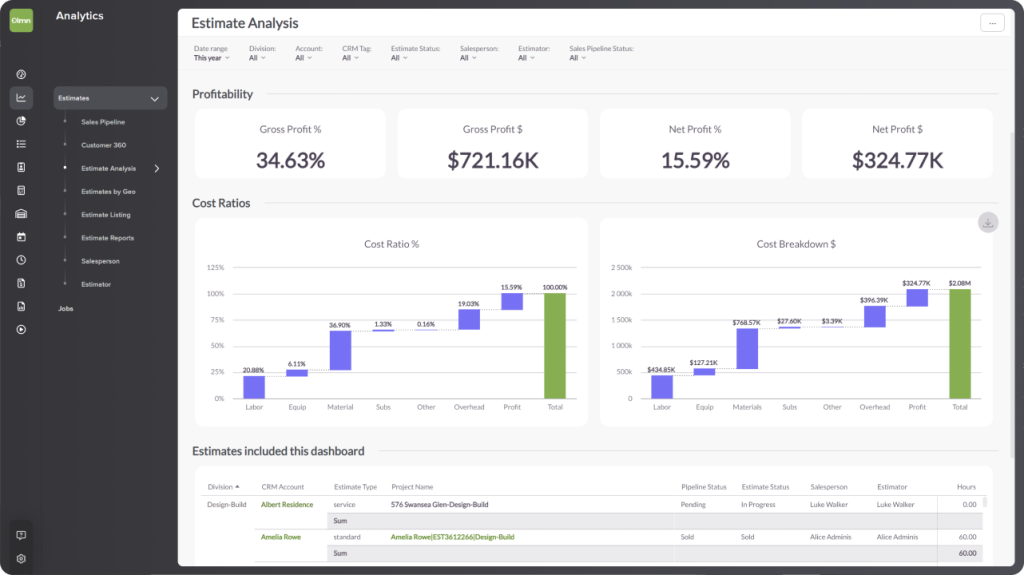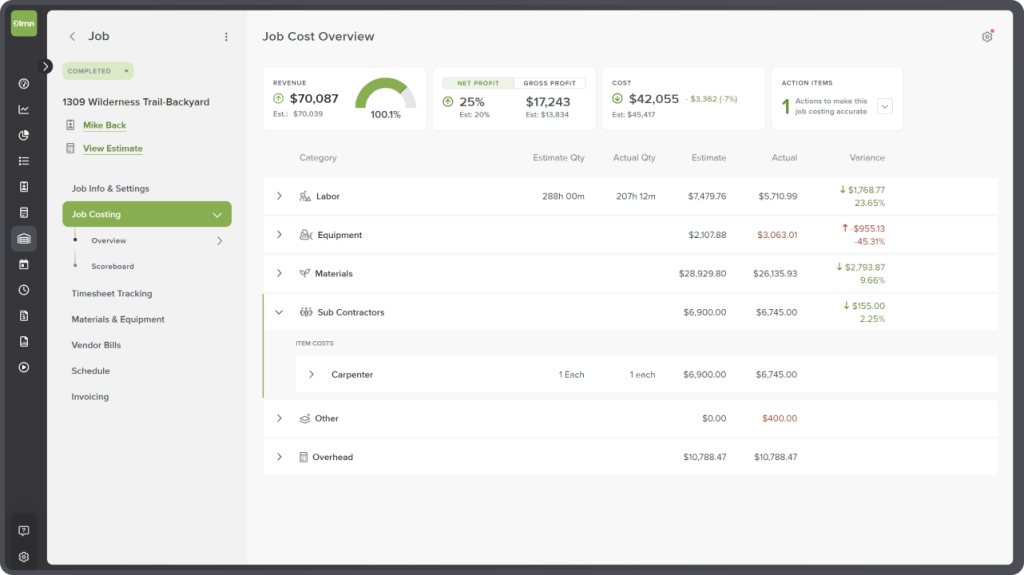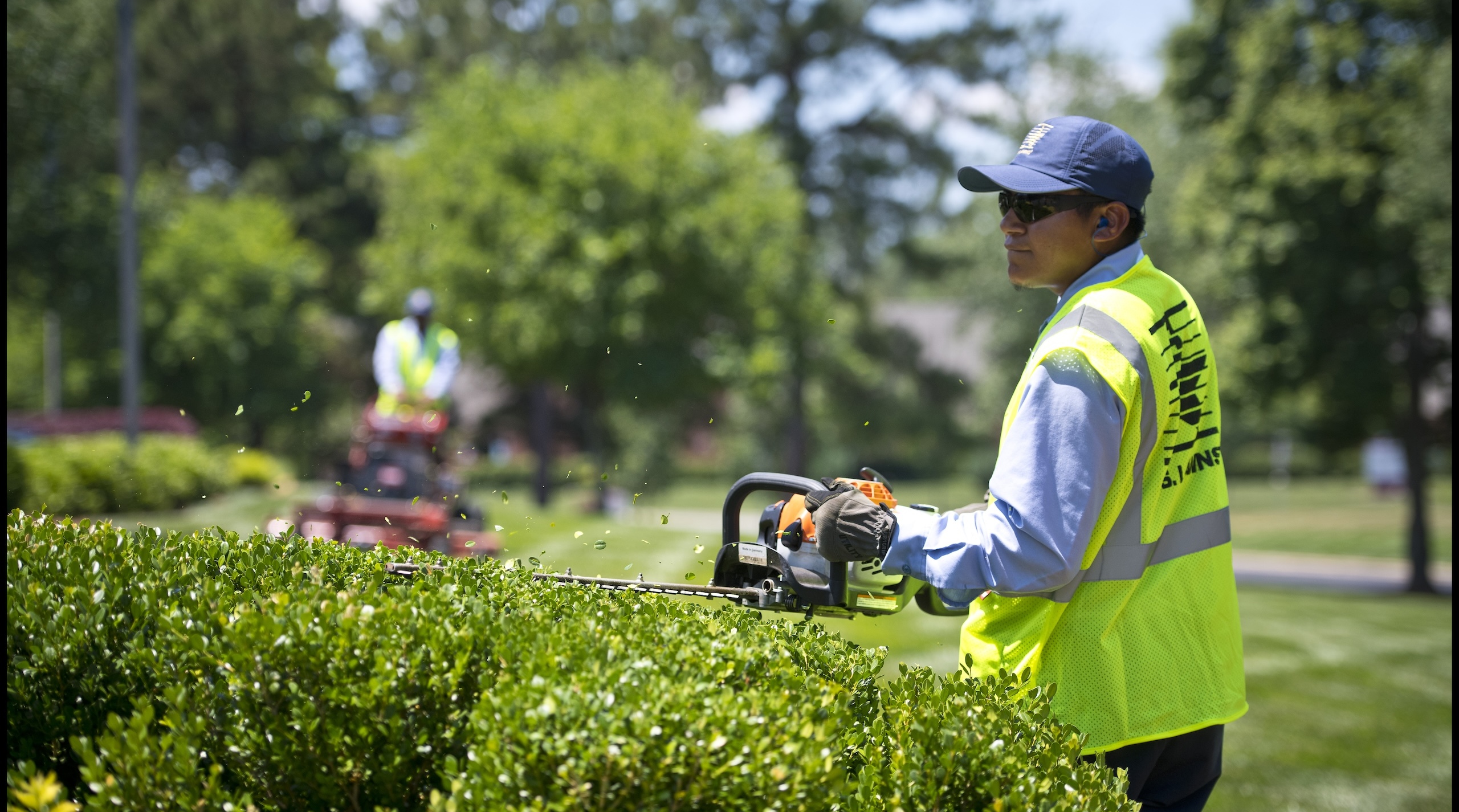Introduction to Pricing Landscaping Jobs
How much you charge for your customers can make or break your landscaping business.
If you charge too little, your business won’t be profitable or sustainable. But if you charge too much, you will struggle to compete with other landscaping companies.
This is why you can’t just guess at your rates and hope everything works out.
That can be easier said than done, though. Different jobs will cost different amounts to carry out, with a number of variables that can change any time.
Whether it’s the weather, the project complexity, or local labor costs, there are so many moving parts that contribute to how much something will actually cost.
But that doesn’t mean you can’t get it right. By using a systematic approach, you can ensure you’re pricing your services consistently and reliably, to make sure you stay competitive, while remaining profitable.
This guide is going to explain exactly how to achieve this.
Understanding the Basics of Landscaping Job Pricing
Before we dive straight into deciding your price, it’s important to first understand the basics of what goes into job pricing…
Labor Costs
This one is probably the most obvious — landscaping needs manpower to get the job done. So you need to have a decent idea of how much actual time will be spent on the project.
You need to think about the different skill levels, too. After all, an experienced bricklayer will cost more than a landscaping assistant.
Another factor is seasonal availability. It’s harder to find certain specialized skills at different parts of the year, so you might have to pay more to make sure you get the right labor.
Material Costs
Every job requires different materials, and different materials don’t cost the same. So you need to have a clear idea of the materials you need, such as plants, fertilizers, and hardscaping materials.
You need to have a clear plan of the quantity you need of each material, especially if your client has any special requests for unique or premium materials.
Similar to labor, some materials will be cheaper and more accessible at different times of the year, so you have to factor this in.
Equipment Costs
You’ll probably see a theme developing here, but different projects also required different equipment to carry out the work.
How long will you need the equipment for? Will you buy or rent? Do they require power, fuel, or and specialized products? Will it cost you to transport them on site?
These are all questions you’ll need to answer to accurately price your jobs.
Overhead Expenses
Outside of the specific jobs themselves, there are other overheads you need to factor into your job pricing. These expenses will likely be spread over the year, but that just means every job needs to be contributing to them.
- Liability insurance premiums and workers comp
- Business licenses and permits
- Office rent, utilities, and admin costs
- Marketing and advertising
- Business management software
Setting Competitive Rates
Another important factor in pricing your jobs is making sure your rates are competitive. The goal isn’t to undercut your competitors, but to justify your rates if they’re higher, and position yourself at the right place in the market.
There are a couple things you need to do to make sure your rates are competitive…
Conducting Market Research
The first step in this process is to carry out some market research. The goal here is to understand your customers, your area, and your competitors, in order to remain competitive year-round.
This can be broken down into a few different areas:
- Study competitor pricing strategies to gauge market rates
- Analyze the types of people in the local area to understand the potential client-base and spending power
- Identify gaps in the market and underserved niches in the local landscaping industry
- Assess seasonal demand fluctuations to adjust pricing accordingly
- Survey potential clients to understand their needs and what they’re willing to pay
- Monitor industry trends and emerging technologies that could affect pricing
Differentiating Your Services
The next step is to find ways to differentiate your offering from your competitors. A good way to do this is to make a list of 5 – 10 of your closest competitors, then by each one listing the things that make them stand out.
Then from this list you can spot gaps that you can use to your advantage. For example, if none of your competitors emphasize eco-friendly and sustainable practices, this could be an opportunity for you to stand out.
Once you’ve got three or four differentiators, you can then start to emphasize these things in your marketing, and as a way to justify higher rates.

Estimating Costs for Landscaping Jobs
Guide readers through a step-by-step process for creating accurate job estimates, emphasizing the importance of site visits and detailed client consultations to gather all necessary information for precise cost estimation.
Step 1: Conducting Site Visits
You should schedule an on-site assessment for every project you’re pricing. Traditionally this would have been to measure the job site in person, but using a mapping tool this process can now be more accurately done remotely.
Instead, your site visits are more about getting an understanding of the site, and anticipating unforeseen project costs that might come up.
Step 2: Client Consultations
The next step is consulting with your client. This is where you discuss the client’s vision, preferences, and budget requirements. Essentially, you’re trying to clarify the scope of the work, and the clients expectations.
This is also where you should address any concerns, and present material options for them to choose.
You should also discuss timelines at this point, to make sure you’re both on the same page.
Step 3: Creating Detailed Estimates
Finally, you will need to break down the project into specific tasks and phases. This makes it possible to calculate labor, material, and equipment costs, while adding contingency for unforeseen issues. This is typically between 10 and 15 percent.
Make sure to double-check your calculations to ensure they’re accurate, then you provide a clear, itemized estimate to your client.
Once you’ve done this, you should also be prepared to go through this with the client, explaining each line item (in case they ask).
Need help optimizing your pricing strategy? Check out LMN’s detailed estimating features to see how they make your life easier.
Boosting Profits in Landscaping Jobs
Job pricing isn’t the be-all-end-all when it comes to increasing your profits. There are a few other things you can do to boost your profits, without having to significantly up your prices.
Upselling and Cross-Selling
A great way to increase your profits is to upsell or cross-sell. Upselling is where you persuade your clients to purchase a higher-priced version of a product or service. For example, you might offer more premium plant varieties, or maybe suggest they use natural stone slabs instead of manmade.
Cross-selling is where you offer complementary products or services that could enhance the core job. For example, you could offer seasonal services like fall clean-up or spring planting to ensure their garden looks great for years to come.
Streamlining Operations
Another way you can improve your profits is by streamlining operations to cut your costs. An example of this would be using labor-saving equipment like a skid steer or a bark blower, that reduces the labor hours needed on site.
You can also do things like order materials in advance, cross-train employees with different skills, or use project management software to more efficiently plan and track jobs.
Monitoring Job Costs
Finally, you can increase your profits by keeping an eye on what’s costing you the most money. This can be done by implementing time-tracking systems to improve your labor allocation, tracking and analyzing job cost reports, and identifying consistent overruns or inefficiencies.
The easiest way to do these things is by using a business management tool for landscapers. This will track all the key metrics, and make it possible to monitor these costs.
Enhancing Client Satisfaction
What’s the point in choosing the right price and winning the job if you’re not going to give the client a good experience? Word of mouth is a key part of winning business, so you should be doing everything you can to increase client satisfaction.
One easy way to do this is by providing transparent pricing. You want your clients to know exactly what they’re paying for. Provide detailed estimates that justify the price you’re quoting, then give them itemized invoices so there’s no concern they’ve overpaid.
You should also maintain clear and constant communication with the client from first contact through to payment. This will build trust with the client, and makes them much more likely to ask the right questions, or express concerns for you to address.

Leveraging Technology for Accurate Pricing
As we’ve already touched upon in this guide, technology can play a key role in monitoring job costs and keeping your customers happy. But it should also be playing a leading role in your pricing.
Estimating Software
By using estimating software, you not only speed up your estimation process, but can also create far more accurate estimates quickly and easily. This improves the accuracy, while saving you time.
It also makes you look more professional by providing standardized estimates, and allowing the client to sign digitally.
Virtual Measuring Tools
Virtual measuring tools reduce your need to be on-site, manually measuring up. They make it possible to measure the job remotely, saving you time and resources.
It’s also more accurate than manual measuring, meaning your estimates will be more accurate.
Integration of pricing data and real-time monitoring’
Software also makes it so much easier to bring your estimation and pricing data together. This kind of job costing functionality makes it so much easier to both predict how much money you’ll make from a job, but also track it in real time.
You can monitor your crew’s hours, track equipment costs, and factor in vendor bills in one place. Which makes it possible to track exactly how much a project should be, and how it’s going. Tracking this data also makes it possible to make adjustments in real-time, while there’s still time to fix the problems.
How LMN helps you to price jobs more accurately
“I would recommend LMN to anyone needing to manage their estimates, quotes, and job schedule.”
- Tanis T, LMN customer (g2)
LMN is a management software made for landscapers. It’s the ultimate toolkit for tracking every aspect of your landscaping business, all in one place.
It helps you to improve the accuracy of your job pricing, monitor your profit margins, and give your clients the best possible experience.
Interested in how LMN can help you to improve your job pricing, while delivering a top-notch customer experience? Book your 30-day free trial today!
Frequently Asked Questions
Common landscaping pricing mistakes include inaccurate cost estimation, which often leads to financial losses and client dissatisfaction, and inefficient cost management, which damages the profit margins.
Best practices for landscaping pricing include using software to accurately estimate costs, streamline estimations, and reduce errors. It’s also good practice to implement a systematic approach that factors in labor, materials, equipment, and overhead expenses.
The LMN blog is full of useful articles, blog posts, and guides targeted at helping landscapers to run their business more efficiently, and generally improve how they run their business.




